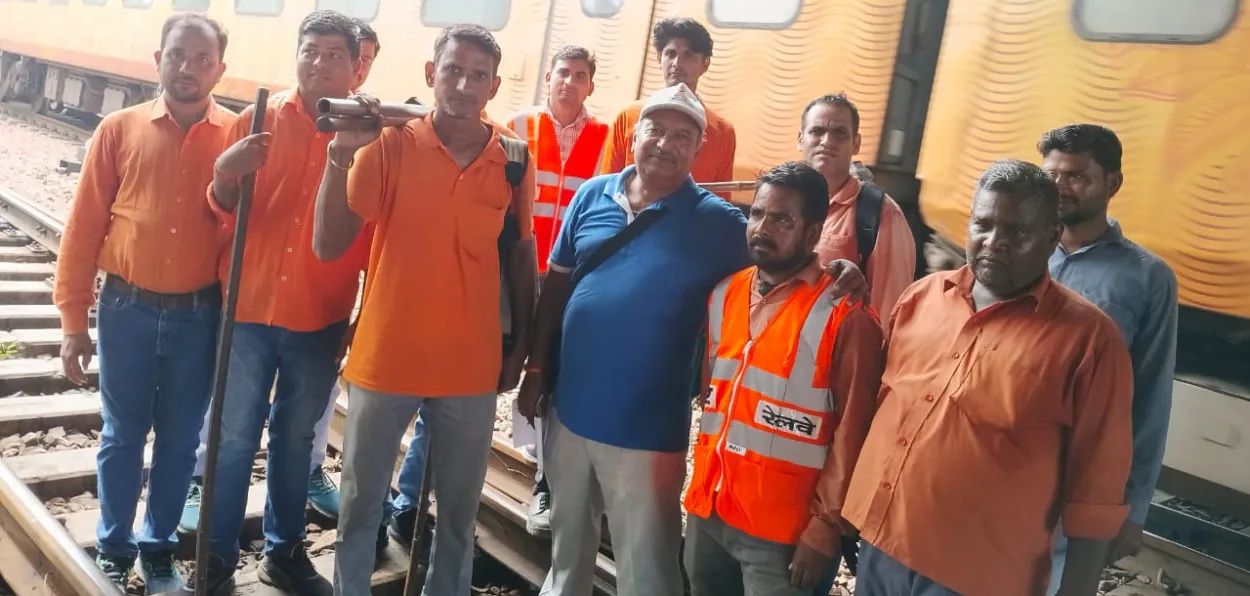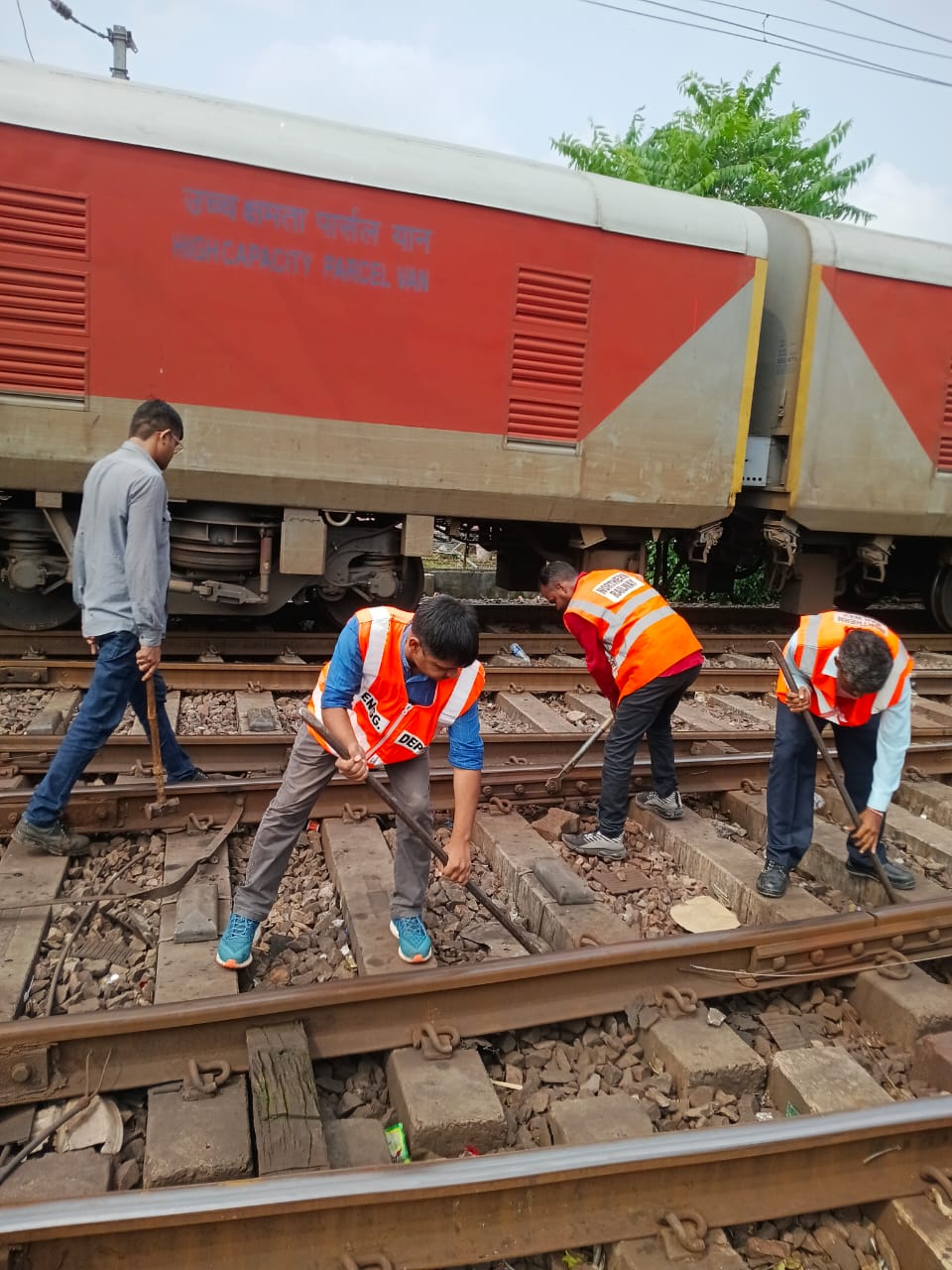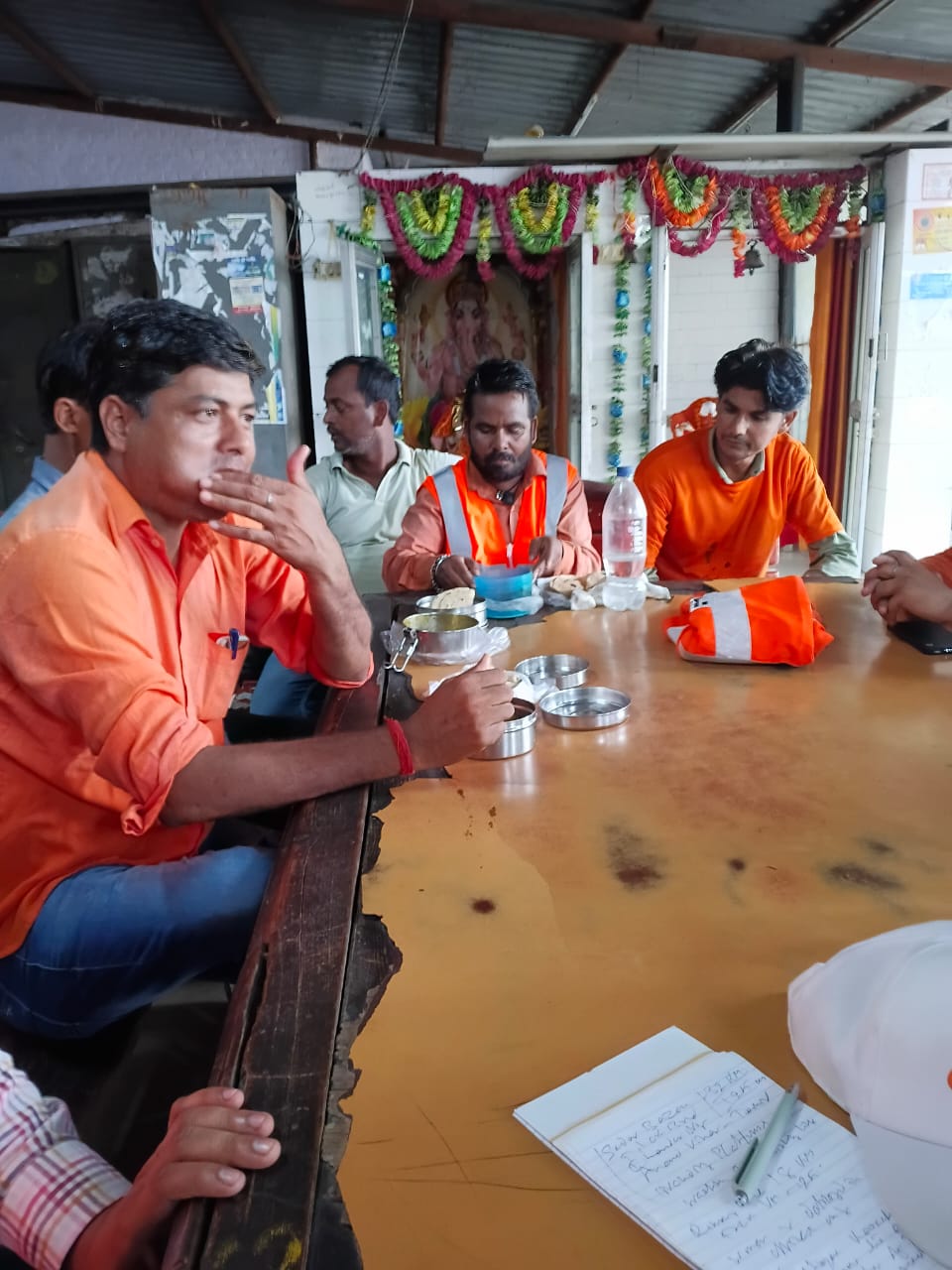
Arun Kumar Das/New Delhi
As the first rays of the sun fall on Delhi’s Sadar Bazar railway tracks, Ankesh, dressed in his uniform and holding a hammer, is ready to begin another day’s work. He patiently waits by the side of the tracks as a 52-wagon freight train thunders past. Only after the train clears does he step across the rails to inspect and repair them.
Soon, his colleague Neeraj joins him, and the two men begin hammering the tracks in unison. Both in their 30s, Ankesh and Neeraj are Track Maintainers in the Indian Railways—key workers tasked with ensuring that rail lines remain in perfect condition so trains can pass safely and millions of passengers can travel without disruption every day.
The job is far from easy. It involves walking long stretches of railway tracks, inspecting them closely, repairing faults, and always staying alert for fast-moving trains from both directions. Any lapse in vigilance could prove fatal.
By 10 a.m., rain starts pouring. With no shelter nearby, the gangmen keep working as they walk toward New Delhi Railway Station. There, they are joined by Lokesh, a Keyman who carries a toolkit bag and performs additional tasks such as adjusting the rails when cracks or fractures are detected. Rail fractures are one of the leading causes of train derailments, making early detection and repair crucial.
“Even though machines are now available to inspect tracks, it’s not enough,” says a senior official from the Railway Ministry. “We still rely heavily on gangmen to ensure smooth train operations.”
Lokesh’s toolkit weighs about 10 kg and contains items like a hammer, wrench, flags, a daily diary, spanner, water bottle, and detonators—used to alert train drivers during dense fog.

The wing of Paschim Express glides into the station, followed closely by the fast Tejas Bhubaneswar Rajdhani and Gomti Express, marking peak traffic hours when most northbound trains must pass through. The rain has ceased, and the three gangmen are greeted by their senior, Mukesh, a Jamadar responsible for overseeing 20 gangmen, managing muster rolls, and organising duty charts.
At the outskirts of the station, two more gangmen, Sidhakant and another Mukesh, join the group. After quenching their thirst from water bottles, they exchange notes on the work done so far.
By 1 p.m., the sun blazes overhead, and it’s time for lunch. The gangmen head to the shed near the station, which is being cleaned up for Vishwakarma Puja scheduled for September 17.
“We celebrate Vishwakarma Puja every year here,” says gangman Mukesh, who holds a graduate degree. Many graduates and postgraduates have chosen Level-1 jobs like these in the Railways. Kailash, a postgraduate in Hindi and History with a B.Ed., is also a Keyman.
“There’s no problem doing track maintenance. Every job has dignity. The real issue is the lack of promotion avenues. We should be given chances to appear in exams for higher posts,” says Kailash.
As more gangmen from nearby sections join in, lunch turns into a two-to-three-hour affair, depending on operational requirements.

Lunch Time of the Gang-men
“Unless some emergency arises in other sections, we take time to relax and eat together,” explains Keyman Roshan Lal.
“Today is a good day—we’re having lunch together. But on some days, we don’t even get a break,” adds Track Maintainer Jitendra.
By 3 p.m., the rain has stopped, and Ankesh and Neeraj pick up their hammers once more, heading back to their work.
They must inspect 3 km of track before returning to Sadar Bazar station by 6 p.m. “We always see morning joggers when we head out and evening walkers on the way back,” Neeraj smiles. “For us, it’s like jogging alongside the tracks every day.”
While returning, a message from a Keyman directs them to rush to a site near the station. “It turned out to be a minor fault, which we repaired on the spot. These are routine matters—we are always ready to respond in an emergency,” Ankesh explains.
Track maintenance work is organised in three shifts because ensuring the rail lines are safe is critical for train operations. Rain, extreme heat, or bitter cold, gangmen stay on the tracks to inspect and repair them.
During summer, rails expand, while in winter, they shrink—both conditions that cause cracks, which gangmen must address promptly. From steam engines to diesel locomotives, and now electric trains with hydrogen-powered engines in development, technology has advanced—but track maintenance remains heavily dependent on human effort.
Despite modern machines that can detect rail fractures, gangmen are still the backbone of safety on the railway lines. There are 17 job categories in Indian Railways, with the Chairman of the Railway Board at Level-17—the highest—and a Track Maintainer or Gangman at Level-1, the lowest.
Today, around 400,000 gangmen work for the Indian Railways and this is the largest workforce in any category. Their monthly salary ranges from ₹35,000 to ₹48,000, with annual bonuses of ₹17,951, housing, health benefits, and travel passes for both sleeper and AC classes.
A Risk Allowance of ₹3,575 is provided because of the constant danger of being run over by trains. There’s also a growing demand for an Infection Allowance due to health hazards from train toilets discharging waste along the tracks.
What’s remarkable is that many highly qualified individuals are eager to work in this role. While the minimum qualification is a 10th pass or ITI certification, graduates, postgraduates, and even B. Tech and B.Ed holders apply and are recruited.
ALSO READ: Artist-Poet G. R. Santosh was inspired by Kashmir's Shaivism, Tantra
Their work may go unnoticed by passengers racing past in sleek coaches, but gangmen like Ankesh, Neeraj, Lokesh, Mukesh, and their colleagues ensure that trains run safely every day. Their diligence, courage, and commitment deserve far more recognition—and far greater opportunities.
